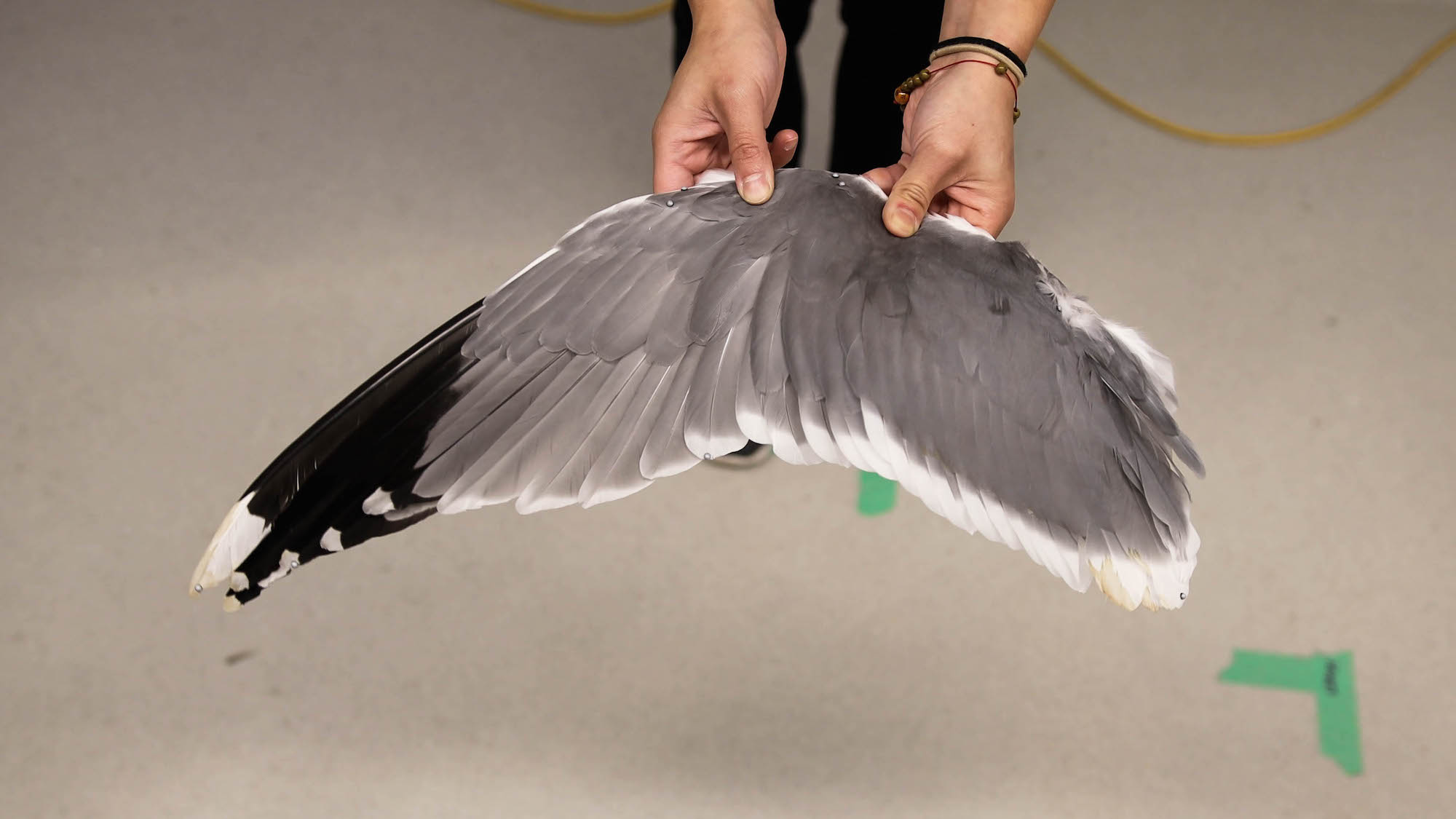Discovering the key to birds’ agility could improve drone design
March 9, 2022

March 9, 2022

While it had been assumed that unstable gliding was the key to agility in bird flight, a collaboration between aerospace engineers at the University of Michigan and biologists at the University of British Columbia revealed that stability also plays a role. The discovery could lead to the design of more agile aircraft, specifically uncrewed aerial vehicles (UAVs).
The discovery comes as a surprise because birds were believed to have been evolving steadily toward less stable flight, from the long, lumbering dinosaur tails of the earliest birds to the short-tailed agility of modern birds. And yet, from the perspective of flight controllability, it's not such a shock.
"I have always been amazed at how birds can glide seemingly without effort for hours only to—in a split second—pull off some unique trick, like a dive or other sudden unstable-looking maneuver," said Christina Harvey, a PhD student in aerospace engineering at U-M and lead author of the study in Nature.
Unstable flight requires constant vigilance to avoid crashing—a control algorithm adjusting flaps on a fighter jet, or a brain signaling muscles for corrective changes. In contrast, stable gliding can passively correct for buffeting by gusts, to an extent.
"We did an evolutionary analysis, led by Dr. Vikram Baliga, that showed quite convincingly that there was a strong evolutionary force driving birds not toward stability or maneuverability, but toward the ability to transition between them," said Dr. Doug Altshuler, a professor of zoology at UBC, who supervised the biology aspects of the project.
Harvey, who did her master's studies at UBC under Dr. Altshuler, had intended to help with the bird studies. However, when the pandemic made travel inadvisable, her former labmates took data for her. Dr. Baliga and Jasmin Wong, a postdoctoral researcher and PhD student in zoology, respectively, studied 22 bird species at the Beaty Biodiversity Museum at UBC. The museum collects birds that die at zoos and wildlife sanctuaries and freezes them for future research studies.
"We tracked the motion of the elbow and wrist joints as well as the whole wing shape during wing flexion and extension, and performed dissection on museum specimens," said Wong.
She and Dr. Baliga carefully measured the length, width and mass of each major body part of a bird including the head, torso, wings and tail. Harvey then developed a computer model that read in this information and calculated where each bird's center of gravity is—sort of a balance point. Leaning on previous work, Harvey estimated the neutral point of each wing shape—the location on the bird where if the center of gravity was placed there, the bird’s position would not be affected by disturbances like gusts of wind.
The key to stability is where these two points—the center of gravity and neutral point—are in relation to one another. When the neutral point is in front of the center of gravity, a gliding bird is stable, meaning that if a gust knocks it into an upward tilt, the bird will passively return towards its starting position without changing its posture. However, if the neutral point is behind the center of mass, the bird will keep tilting further up unless it takes corrective action.
"Combining all these various pieces of information together for each individual species, we created models that gave us an understanding of how a species could change its own stability or instability as it’s flying around," said Dr. Baliga.
It turns out that most modern bird species can manipulate the neutral point to be ahead of or behind the centre of gravity by changing the shape of their wings, enabling them to modify their stability on demand.
"Researchers working on morphing aircraft have long quoted bird flight as a motivation. Christina’s unique background and subsequent research have helped put such claims into analytical terms, making a precise science out of avian flight and how it relates to morphing UAVs," said Dr. Daniel Inman, the Harm Buning Collegiate Professor of Aerospace Engineering at U-M, who supervised the engineering side of the project.
In one such study, in which a bird-inspired drone could transition between stable and unstable gliding by sweeping its wings back, researchers found that controlling the aircraft through that transition was challenging.
"My next step is to get a control expert on board for a new collaboration," said Dr. Harvey. "If we want our UAVs to go there, how much work is that going to be? Is that feasible?"
The research was funded by the U.S. Air Force Office of Scientific Research, the National Science Foundation, Natural Sciences and Engineering Research Council of Canada, Zonta International and FXB International via U-M.
We honour xwməθkwəy̓ əm (Musqueam) on whose ancestral, unceded territory UBC Vancouver is situated. UBC Science is committed to building meaningful relationships with Indigenous peoples so we can advance Reconciliation and ensure traditional ways of knowing enrich our teaching and research.
Learn more: Musqueam First Nation